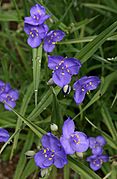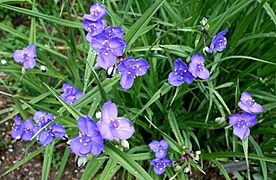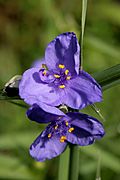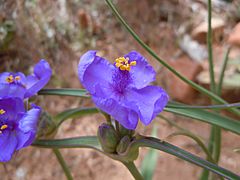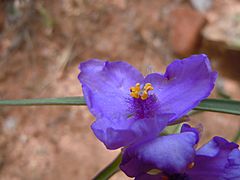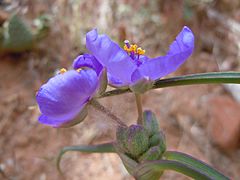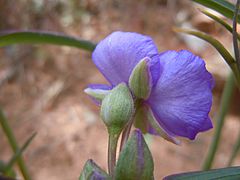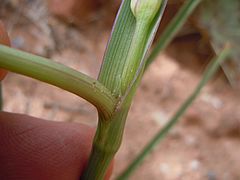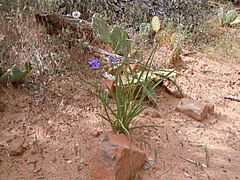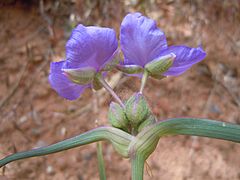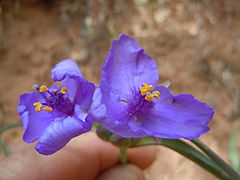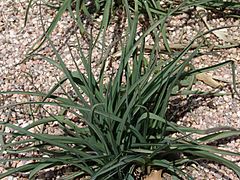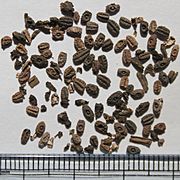Prairie spiderwort facts for kids
Quick facts for kids Western spiderwort |
|
|---|---|
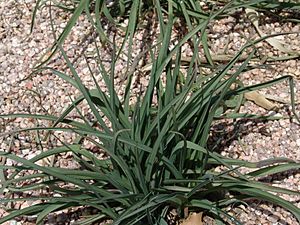 |
|
| Tradescantia occidentalis at Denver Botanic Gardens at Chatfield State Park | |
| Conservation status | |
| Scientific classification | |
| Genus: |
Tradescantia
|
| Species: |
occidentalis
|
| Varieties | |
|
|
The Western spiderwort (Tradescantia occidentalis) is a cool plant. It is also known as the prairie spiderwort. This plant is part of the dayflower family, called Commelinaceae. You can find it growing in many places. It lives across the western Great Plains in the United States. It also grows in Arizona, New Mexico, southern Utah, and Sonora. But in Canada, it is a threatened species. This means it is rare there and needs protection.
About the Western Spiderwort
The Western spiderwort is a type of plant. It is part of a group called Tradescantia. These plants are known for their pretty flowers. The Western spiderwort is common in many parts of the United States. It likes to grow in open areas like prairies. Its scientific name, Tradescantia occidentalis, helps scientists know exactly which plant they are talking about.
A Plant with a Special Power
Some plants in the Tradescantia group have a very interesting feature. The Western spiderwort is one of them. It has tiny hairs on its stamen. The stamen is the part of the flower that makes pollen. Normally, these tiny hairs are a pretty blue color.
How It Detects Radiation
Here is where its special power comes in. If these blue stamen hairs are exposed to certain types of energy, they change color. This energy is called ionizing radiation. It includes things like neutron radiation. When the hairs touch this energy, their cells change. They mutate and turn pink!
This color change is very useful. It means the Western spiderwort can be used as a "bioassay." A bioassay is like a living test. Scientists can use this plant to check for radiation in an area. If the stamen hairs turn pink, it tells them that radiation is present. It is a natural way to detect something we cannot see.
Gallery



